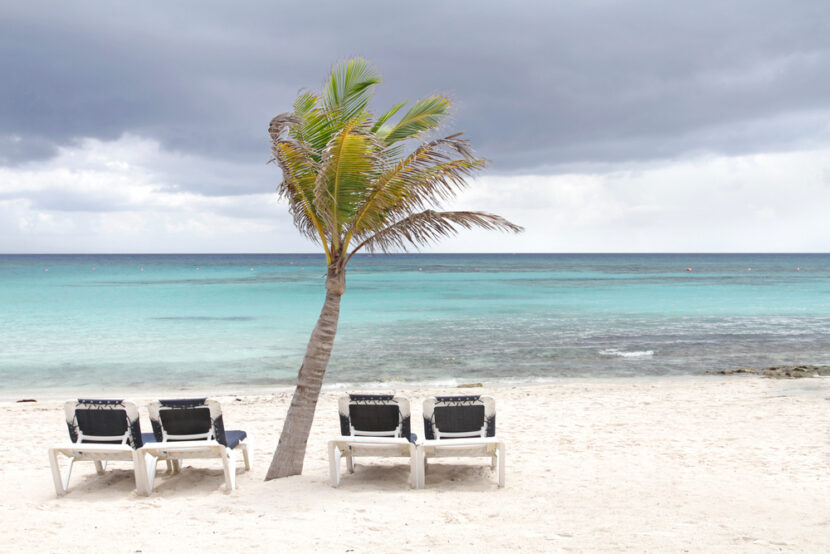SAN JUAN, Puerto Rico — Tropical Storm Erika lashed Puerto Rico Friday with rain and wind after killing four people and causing devastating floods in the eastern Caribbean island of Dominica, where several people remained missing.
Florida Gov. Rick Scott said Friday that Tropical Storm Erika poses a “severe threat to the entire state” and declared a state of emergency.
The storm could hit the peninsula Monday. Scott made his declaration shortly after forecasters adjusted the trajectory of the storm to show that it’s predicted to strike the southern tip of the state and then traverse northward.
The declaration ahead of time gives wide latitude to Scott and other state officials to prepare for the storm. The order calls for the activation of the National Guard and gives authorities the ability to waive tolls and rules to allow emergency crews and vehicles to move throughout the state.
A hurricane hasn’t hit Florida in 10 years. The latest forecasts show that Erika will remain a tropical storm when it makes landfall.
Scott said this week that the state has been fortunate in recent years, but he urged Floridians to watch the news and prepare for the worst. Some parts of the state are still recovering from heavy rains that caused flooding this summer.
Early on Friday, Erika lashed Puerto Rico with wind and rain and had killed at least four people. The storm was about 90 miles east-southeast of Santo Domingo, Dominican Republic, and was moving west at 17 mph with maximum sustained winds of 50 mph.
The storm was expected to dump up to 8 inches (20 centimetres) of rain across the drought-stricken northern Caribbean as it carved a path toward the U.S. The storm is not expected to gain strength as it nears South Florida next week.
Erika was located about 90 miles (145 kilometres) east-southeast of Santo Domingo, Dominican Republic, and was moving west near 17 mph (28 kph), according to the U.S. National Hurricane Center in Miami. The storm’s maximum sustained winds were near 50 mph (85 kph).
Authorities in the Dominican Republic prepared for Erika’s arrival on Friday, including the popular tourist areas of Punta Cana, Samana and Puerto Plata. Meanwhile, rescue crews in Dominica continued to search for missing and injured people after the storm dropped 15 inches (38 centimetres) of rain as it passed over the island.
Assistance Police Superintendent Claude Weekes said Friday by phone that authorities still haven’t been able to access many areas in the mountainous island because of impassable roads and bridges.
“The aftermath is loads of damage,” he said. “It really has been devastating.”
Some 20 people were missing in Dominica, where authorities said an elderly blind man and two children died when a mudslide hit their home in the island’s southeast region. Another man was found dead near his home in the capital of Roseau after a mudslide, but the cause of death could not be immediately determined.
Others narrowly escaped being engulfed by water as Erika downed trees and power lines as it unleashed heavy floods that swept cars down streets and ripped scaffolding off some buildings.
“I was preparing to go to work when all of a sudden I heard this loud noise and saw the place flooded with water,” said Shanie James, a 30-year-old mother who works at a bakery. “We had to run for survival.”
Mudslides also destroyed dozens of homes across Dominica, including that of 46-year-old security guard Peter Julian, who had joined friends after leaving work.
“When I returned, I saw that my house that I have lived in for over 20 years was gone,” he said. “I am blessed to be alive. God was not ready for me … I have lost everything and now have to start all over again.”
The Barbados-based Caribbean Disaster and Emergency Management Agency has pledged assistance. Ronald Jackson, the agency’s executive director, said in a phone interview that at least two helicopters would arrive Friday in Dominica carrying supplies and two medics from Trinidad.
The storm moved past the U.S. Virgin Islands and Puerto Rico overnight Thursday but did not cause much damage except for knocking down some trees and power lines, officials said. U.S. Virgin Islands Gov. Kenneth Mapp imposed a territory-wide curfew until late Friday afternoon.
Meanwhile, in Puerto Rico, some 200,000 people remained without power as crews cleaned up small amounts of debris. Forecasters said the storm dropped some rain on thirsty reservoirs but not the amount they had hoped. Schools and government offices in the U.S. territory remained closed Friday.
The storm is expected to move near or over the Dominican Republic on Friday as it heads toward the Turks and Caicos Islands and the Bahamas.
Tropical storm warnings were in effect for areas across the Caribbean including Puerto Rico, Vieques, Culebra, the U.S. and British Virgin Islands, the Dominican Republic, Haiti, the Bahamas and the Turks and Caicos Islands.
Meanwhile in the Pacific, Ignacio strengthened into a hurricane. The storm’s maximum sustained winds increased Thursday morning to 90 mph (150 kph).
Hurricane Ignacio was centred about 890 miles (1,430 kilometres) east-southeast of Hilo, Hawaii, and was moving west-northwest near 12 mph (19 kph).
Also in the Pacific, Jimena strengthened to a hurricane Friday morning with maximum sustained winds near 80 mph (130 kph). Jimena was centred about 1,045 miles (1,680 kilometres) southwest of the southern tip of Mexico’s Baja California peninsula.
TALLAHASSEE, Fla. —

